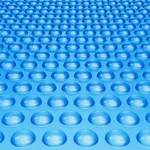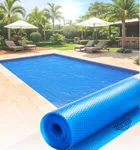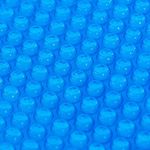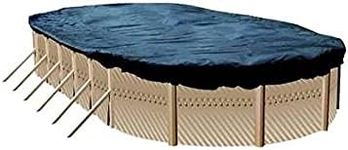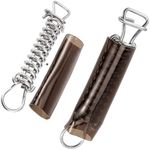Buying Guide for the Best Swimming Pool Solar Covers
Choosing the right swimming pool solar cover can significantly enhance your swimming experience by maintaining water temperature, reducing evaporation, and keeping debris out of the pool. To make an informed decision, it's important to understand the key specifications and how they align with your specific needs. Here are the main factors to consider when selecting a swimming pool solar cover.MaterialThe material of a solar cover is crucial as it affects durability, heat retention, and overall performance. Common materials include polyethylene, polypropylene, and vinyl. Polyethylene is lightweight and affordable, making it a popular choice for many pool owners. Polypropylene is more durable and offers better heat retention, while vinyl is the most durable and provides excellent heat retention but can be heavier and more expensive. Choose a material based on your priorities: if you need a budget-friendly option, go for polyethylene; if you want something long-lasting and efficient, consider polypropylene or vinyl.
ThicknessThickness of a solar cover is measured in mils (thousandths of an inch) and it impacts the cover's durability and heat retention capabilities. Thinner covers (8-12 mils) are lighter and easier to handle but may not last as long or retain as much heat. Medium thickness covers (12-16 mils) offer a good balance between durability and heat retention. Thicker covers (16-20 mils) provide the best heat retention and durability but can be heavier and more difficult to manage. If you prioritize ease of use, a thinner cover might be suitable, but for maximum heat retention and longevity, opt for a thicker cover.
ColorThe color of a solar cover affects its heat absorption and retention properties. Clear covers allow the most sunlight to pass through, heating the water directly but may not retain heat as effectively overnight. Blue covers are the most common and offer a good balance between heat absorption and retention. Darker colors like black or dark blue absorb more heat and retain it better but can also cause the water to become too warm in hot climates. Choose a color based on your climate and desired water temperature: clear for cooler climates, blue for moderate climates, and darker colors for warmer climates.
Size and ShapeSolar covers come in various sizes and shapes to fit different pool dimensions. It's important to measure your pool accurately to ensure a proper fit. Some covers can be trimmed to fit irregular shapes, while others are designed for specific pool types like rectangular, oval, or round. A well-fitted cover will be more effective in retaining heat and preventing debris from entering the pool. Make sure to choose a cover that matches your pool's dimensions or can be easily adjusted to fit.
UV ProtectionUV protection is an important feature that extends the lifespan of a solar cover by preventing damage from the sun's ultraviolet rays. Covers with UV protection are more resistant to wear and tear, fading, and degradation. This is especially important if your pool is exposed to direct sunlight for long periods. Look for covers that specifically mention UV protection to ensure you get a product that will last longer and maintain its effectiveness over time.
Bubble DesignThe bubble design on a solar cover plays a key role in heat retention and durability. Bubbles trap heat and transfer it to the water, while also providing insulation. Different covers have varying bubble sizes and patterns. Larger bubbles tend to retain more heat but may be less durable, while smaller bubbles offer better durability but might not retain as much heat. Consider your priorities: if heat retention is your main concern, opt for larger bubbles; if durability is more important, choose a cover with smaller bubbles.


